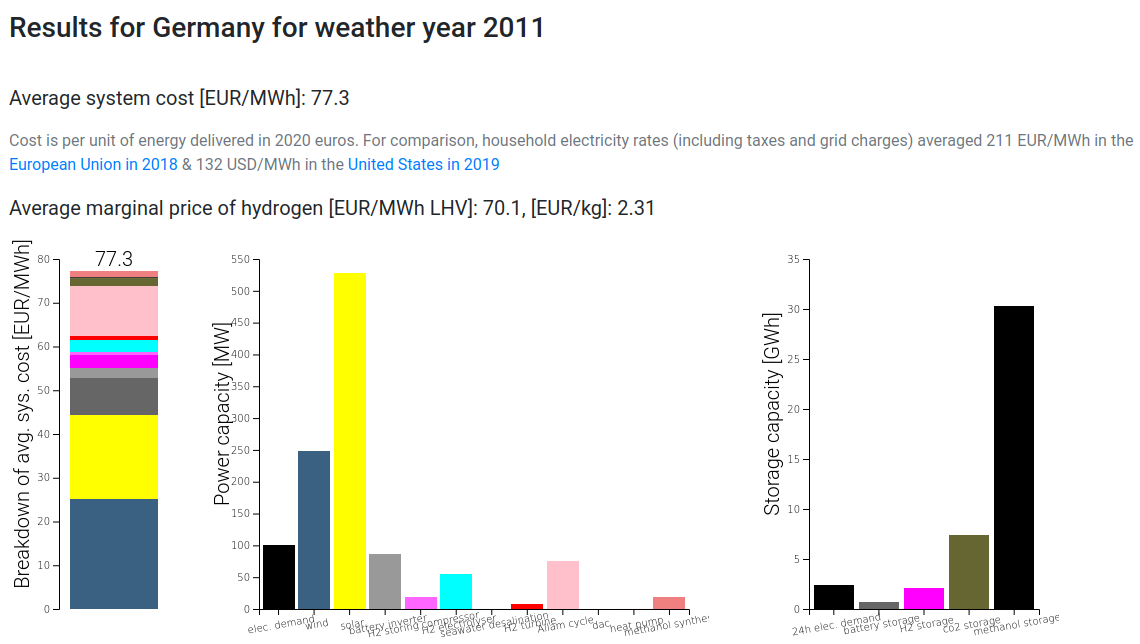Methanol for ultra-long-duration energy storage anywhere
First Posted: 2023.10.31, Last Revised: 2023.10.31, Author: Tom Brown
A renewable power system that is reliable whatever the weather? 🌬️⛅️
The case for e-methanol with carbon cycling ♻️:: liquid storage that can be built anywhere
🚨 New impulse paper🚨 in Joule with Johannes Hampp
Paper: https://doi.org/10.1016/j.joule.2023.10.001
Slides: https://nworbmot.org/energy/brown-ireland.pdf

—
For a very fine overview check out Peter Fairley's article in IEEE Spectrum:
Backing Up the Power Grid With Green Methanol
or read on for my two pennies 🧵
—
What's the problem?
If wind and solar are the backbone of your system, you need to deal with multi-day periods of low feed-in and variability between years.
Fossil+CCS, nuclear, geothermal etc. can help.
Storage? Li-ion batteries can't span such long periods because of $$$.
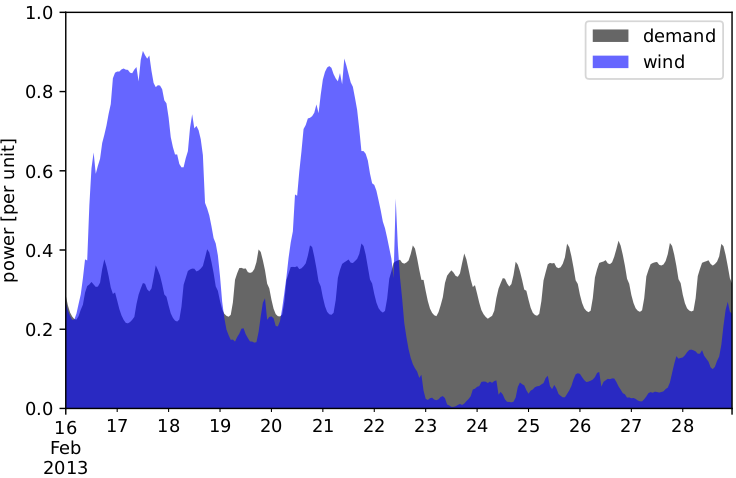
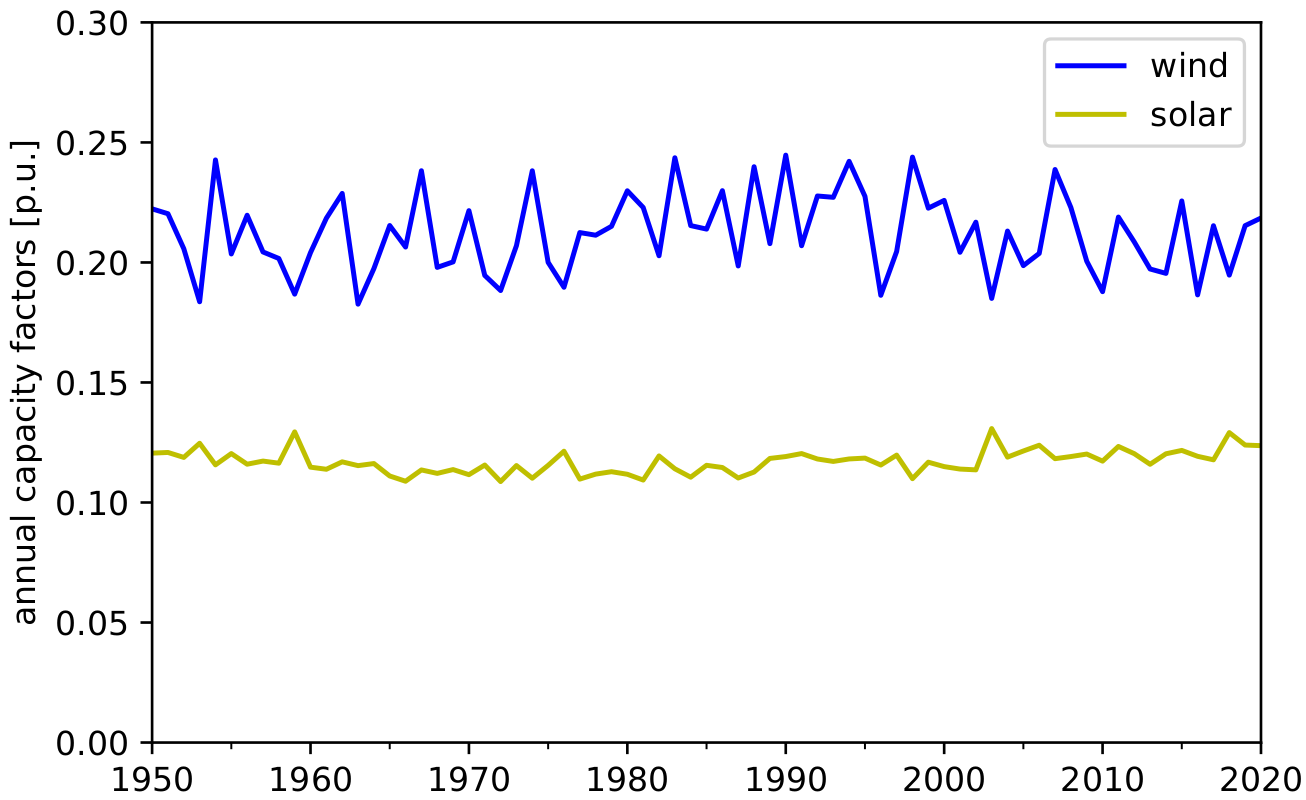
—
Research and government policy is focused on hydrogen storage in underground salt caverns for bridging weekly to seasonal gaps in renewable power.
See e.g. the UK's hydrogen strategy or this new report from The Royal Society
Large-scale electricity storage

—
Salt caverns are great, but need suitable salt deposits, and these are not always where cheap renewables are.
=> Either need lots of power lines to bring power to electrolysis at salt caverns, or a hydrogen network to bring H2 from electrolysis near solar/wind to the caverns.

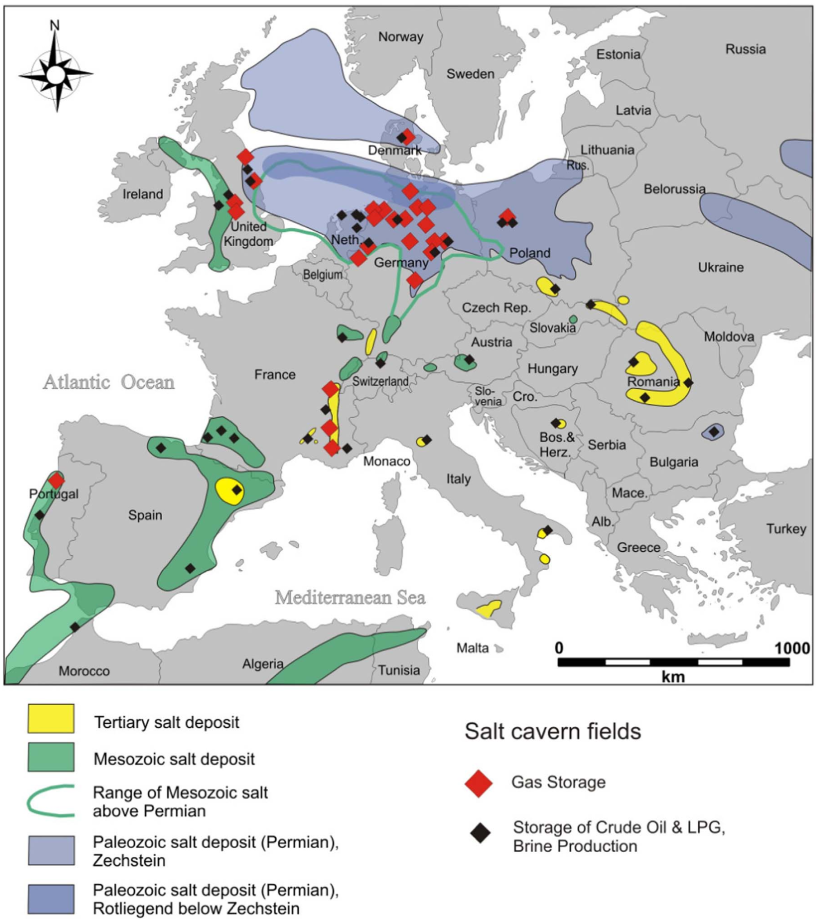
—
Large-scale storage of hydrogen in pressure vessels is a no-go because of the cost of all that steel (~15-50 €/kWh).
Then there are other problems of being a fiddly gas to transport, H2 leaks as an indirect greenhouse gas, NOx emissions from high-temperatures in turbines, etc.
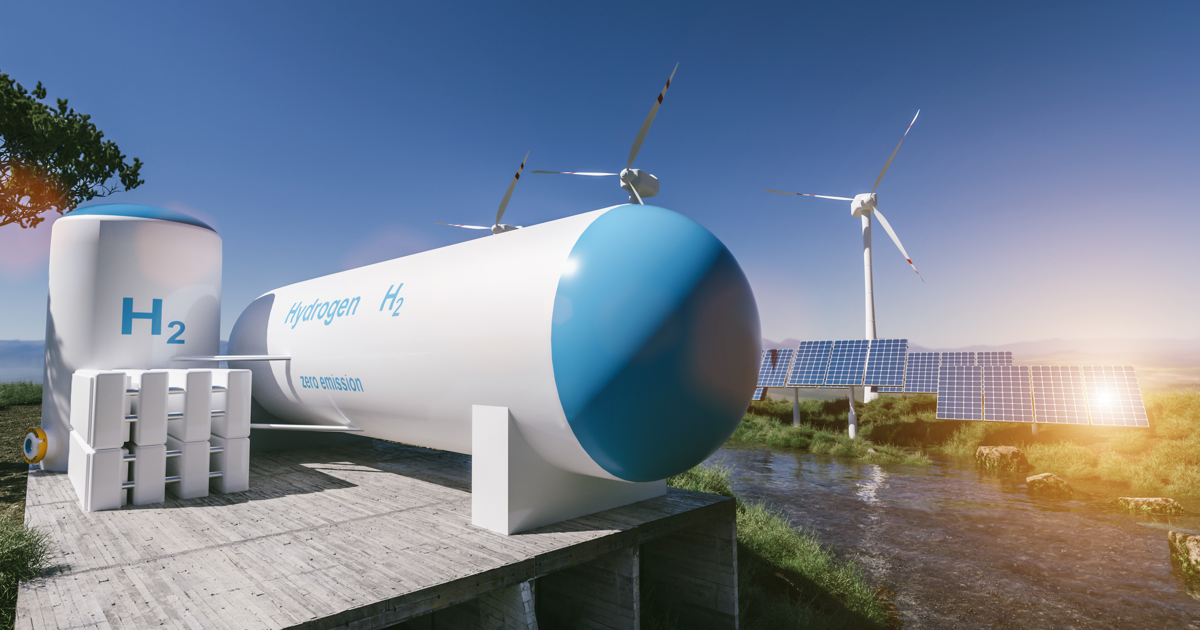
—
An alternative: store energy as a liquid in methanol
Combust methanol in pure oxygen in an Allam cycle turbine; this allows easy capture of pure CO2; then cycle CO2 back for more methanol synthesis with green hydrogen
Concept 1st suggested in Baak et al: https://doi.org/10.1016/j.enconman.2018.12.015

—
Cycling avoids sourcing CO2.
Synthesis losses are partly offset by no need for compression and high efficiency of Allam (MeOH round-trip eff. is 35% versus 38% for H2).
Methanol can be stored in aboveground tanks, just like oil.
A single 200,000 m3 tank can store 880 GWh.
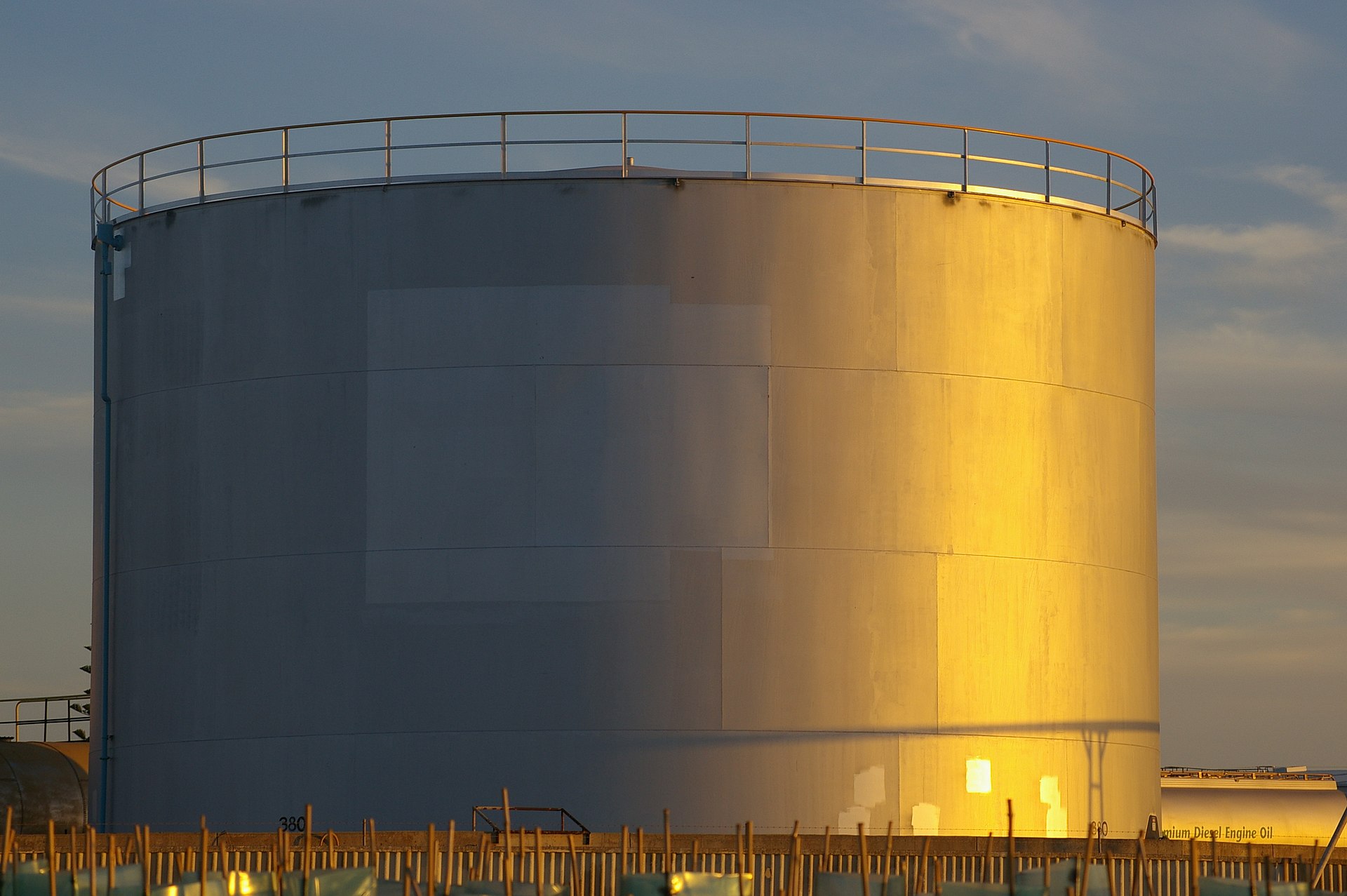
—
Methanol is a widely-traded commodity.
Looking beyond power sector, we may need renewable methanol for long-distance shipping, perhaps to make kerosene for aviation and also for the chemical sector. Power would be a tiny fraction on top.
Blogpost: All your carbon shall be methanol
—
To test the concept, we built a stripped down power model with just wind, solar batteries and one type of chemical storage.
To capture many weather conditions as well as inter-year variability, we took hourly data over 71 years (1950-2020) for 3 European countries.
Scenarios:
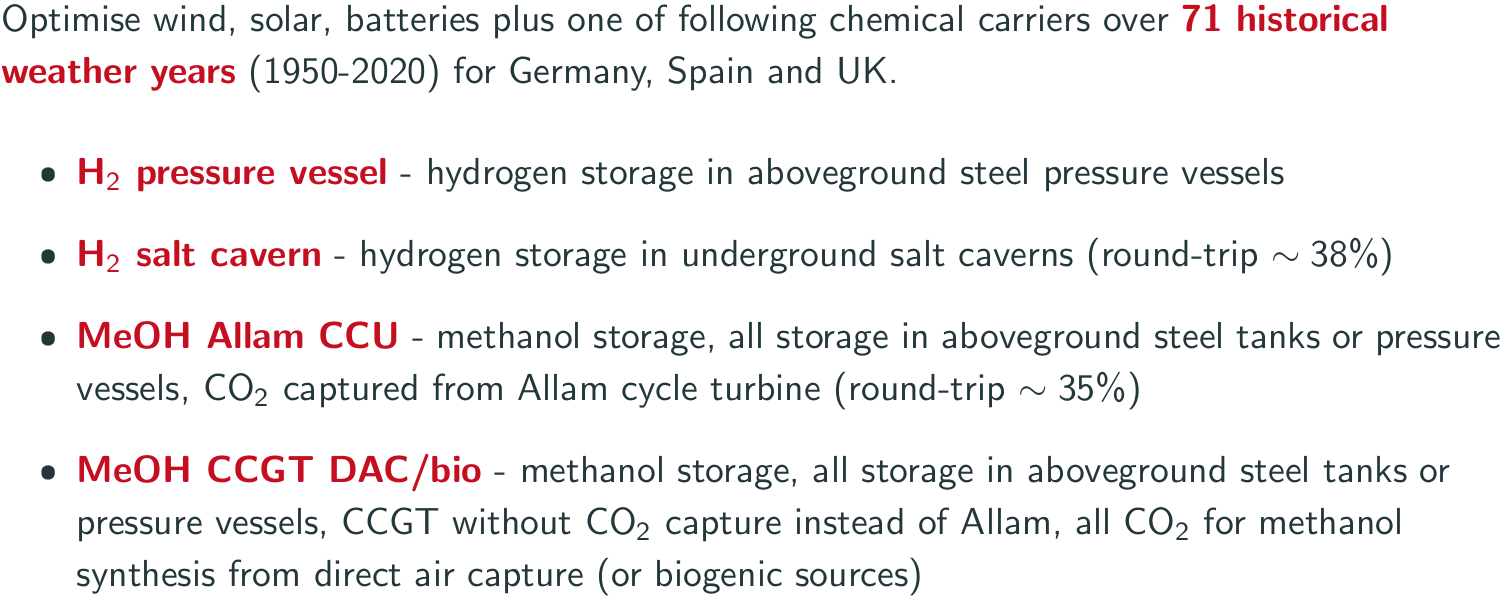
—
So what would a wind/solar/storage system cost?
Firstly, a methanol system is much cheaper than H2 pressure vessels (if no salt caverns).
But still 16-20% more than using salt caverns, with costs driven by Allam turbines.
If Allam costs reduce to CCGT costs, only 6-7% more.

—
We simulated over 71 years of weather data to show resilience to low-wind years and rare events.
Methanol was stored over many years to bridge multi-year reductions in wind. Storage covers 92 days of electricity demand (today oil reserves also dimensioned for 90 days of demand).
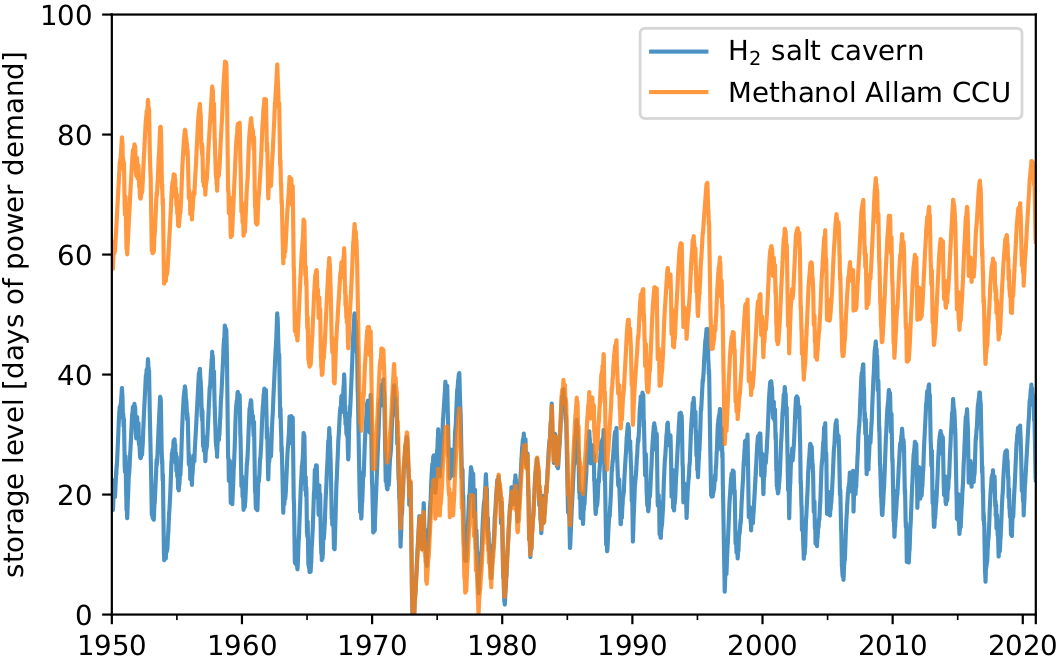
—
Less than 10% of electricity is provided by stored e-methanol; the rest comes from wind, solar, batteries.
13% of wind and solar is curtailed, further 13% lost in storage conversion.
Curtailment and use of e-MeOH will be lower with grid interconnection and flexible P2X demand.
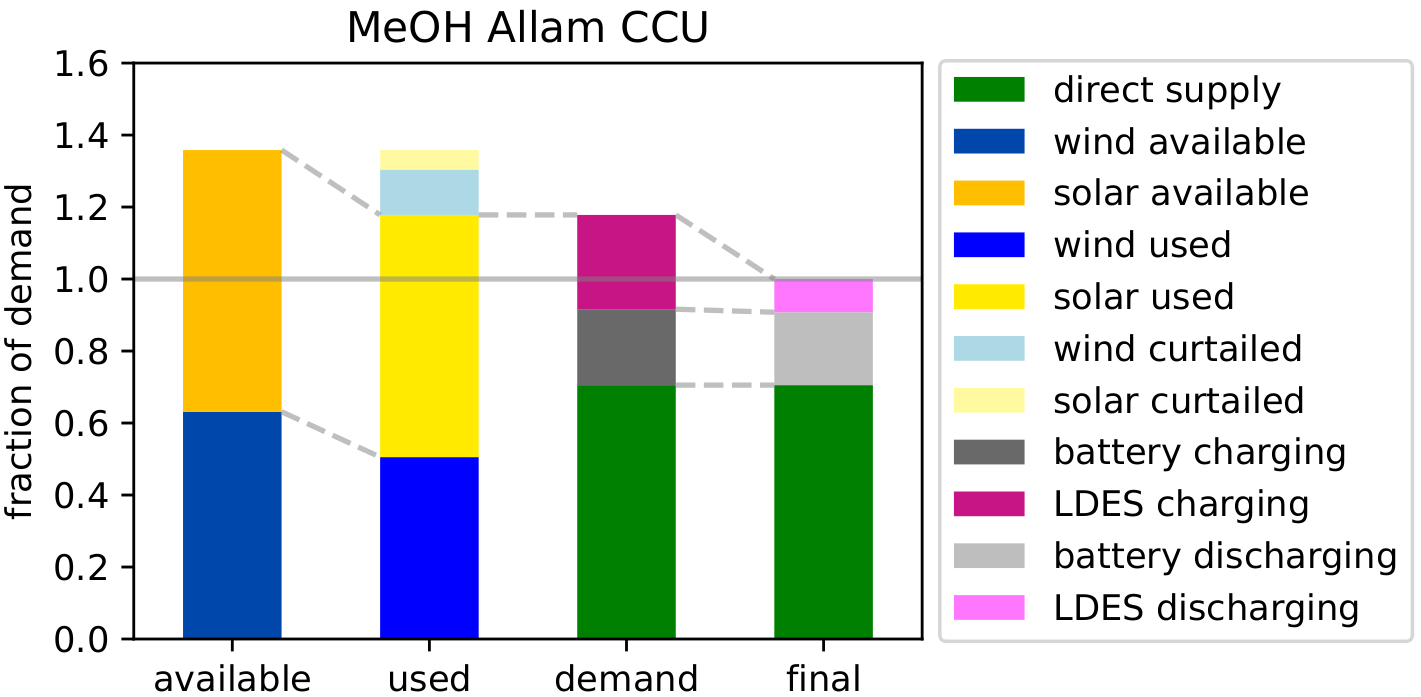
—
To wrap up:
- e-methanol with carbon cycling is promising for long-duration storage
- especially where hydrogen storage is tricky due to geology
- will need methanol anyway for e.g. shipping and industry
- granular tech => iterations => learning
- More research needed!
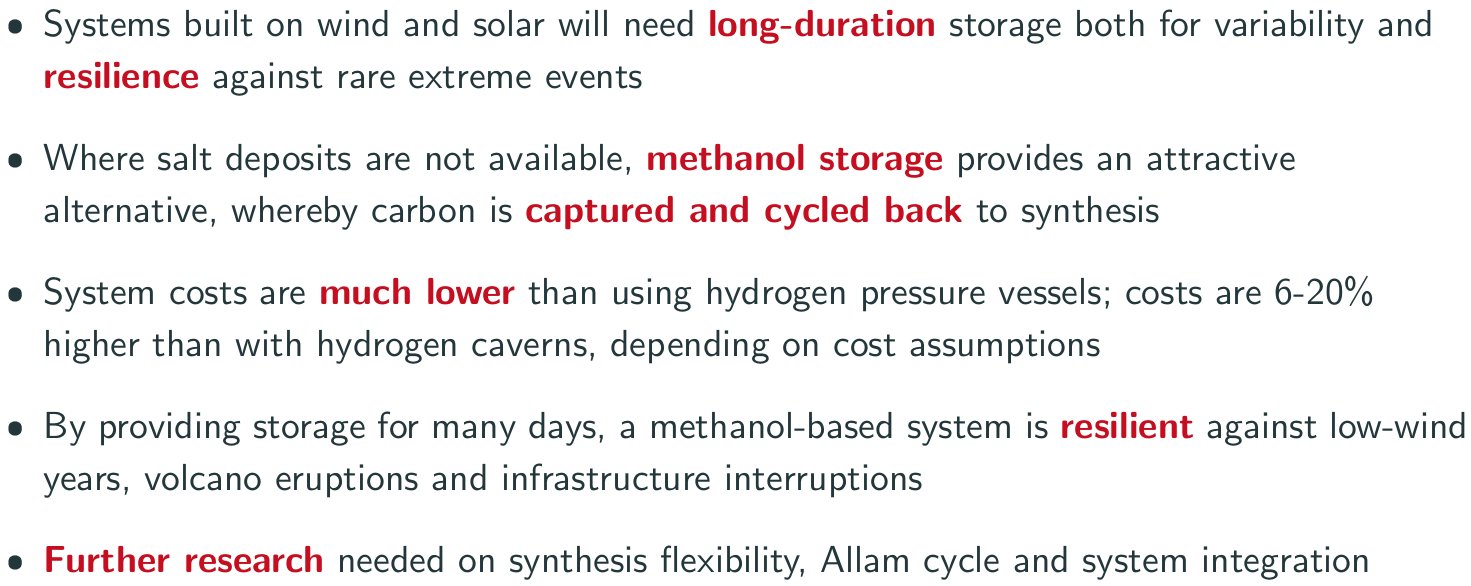
—
Here are the links again:
Impulse paper: https://doi.org/10.1016/j.joule.2023.10.001
Slides: https://nworbmot.org/energy/brown-ireland.pdf
Code and data is open: https://zenodo.org/doi/10.5281/zenodo.8307904
IEEE Spectrum article by Peter Fairley: Backing Up the Power Grid With Green Methanol
—
Now some bonus content.
How do costs change with scale?
The size can be reduced to 200 MW (electrolyser power) while maintaining cost savings of scale.
=> interesting for smaller autarkic regions, such as islands or data centres
=> granular tech, many iterations, learning
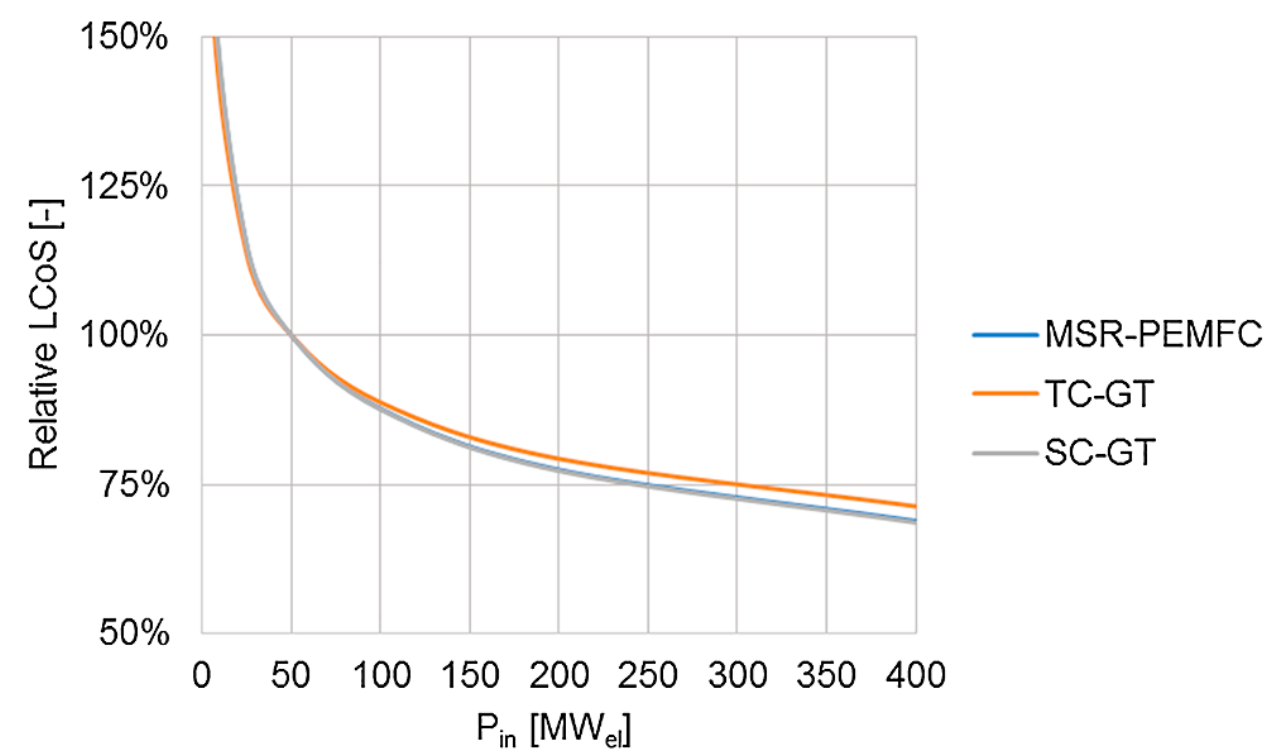
—
How does methanol compare to other hydrogen carriers like ammonia, methane, LOHC?
Here's a summary.
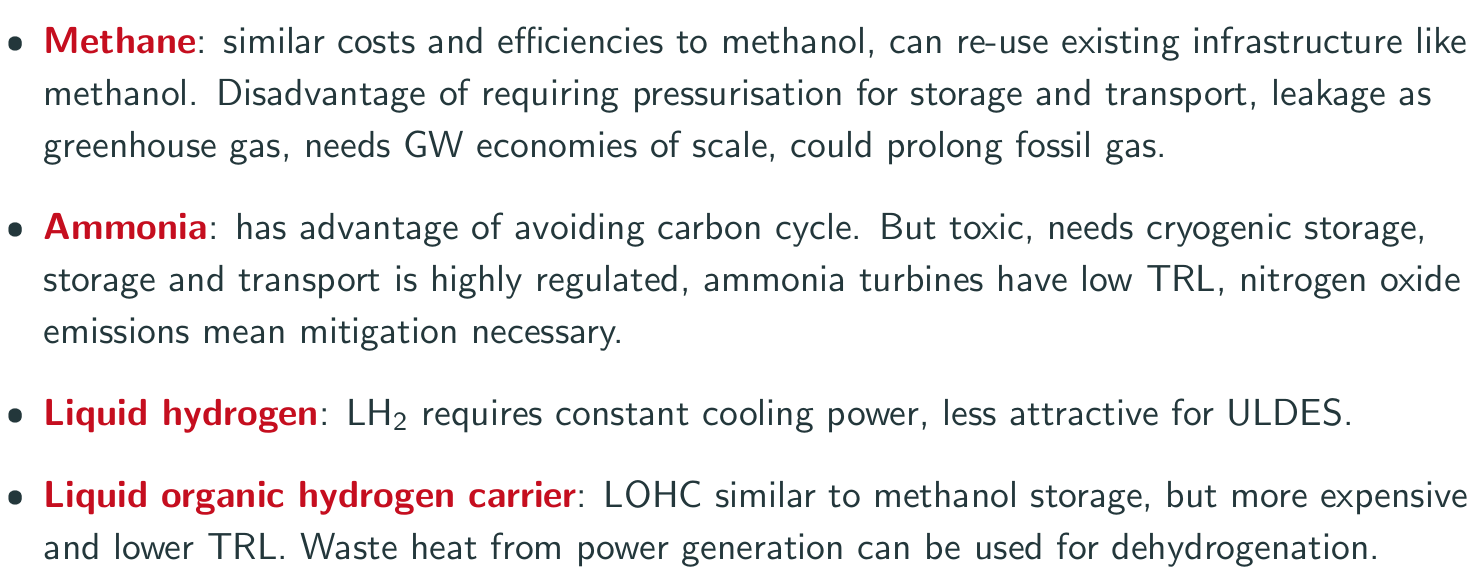
—
How are results affected by flexibility of methanol synthesis?
Fossil methanol synthesis typically runs with high capacity factors. Here we explore varying the minimum part load level (from 0% to 50%) and the hourly ramping limit (from 10% to 5%).
Answer: not too badly.

—
Want to play around with the model yourself?
Methanol storage can be added in the live optimisation website https://model.energy.
Check the box in "advanced assumptions" (and set the H2 storage cost to pressure vessels with 13 €/kWh).
Enjoy!
